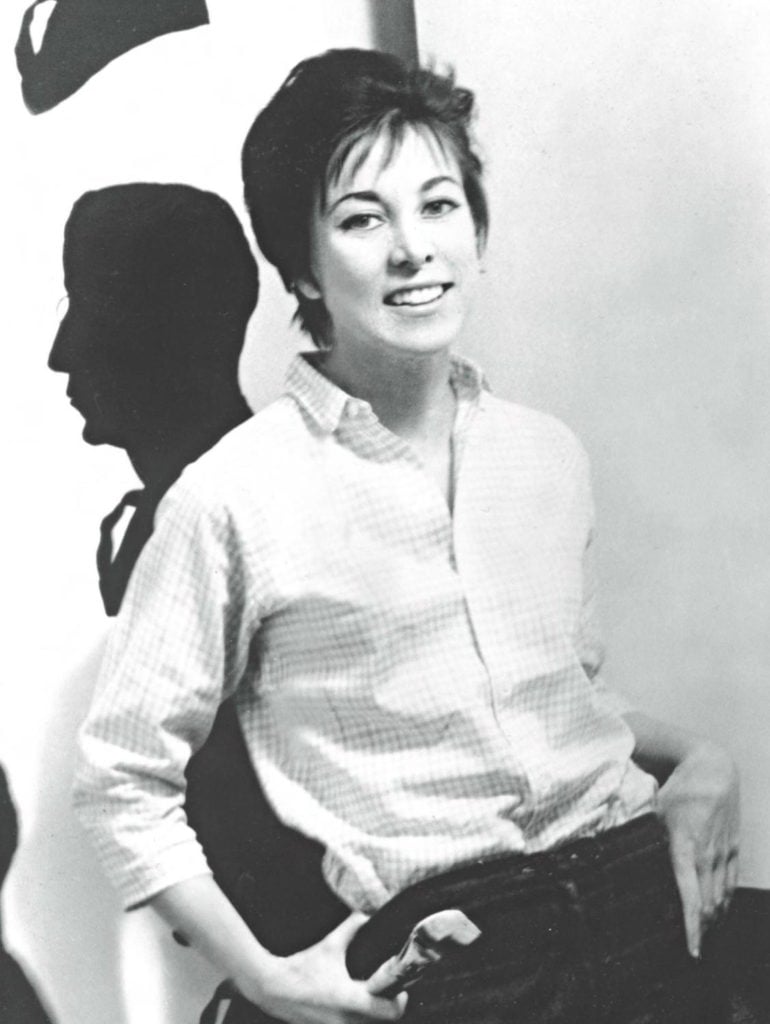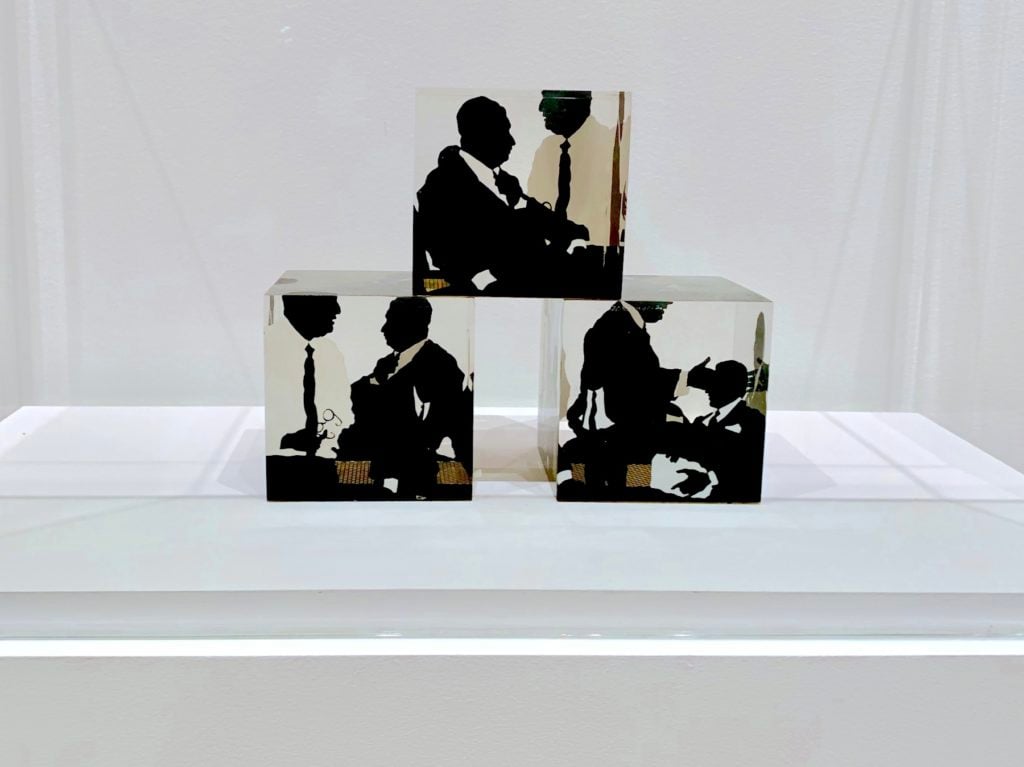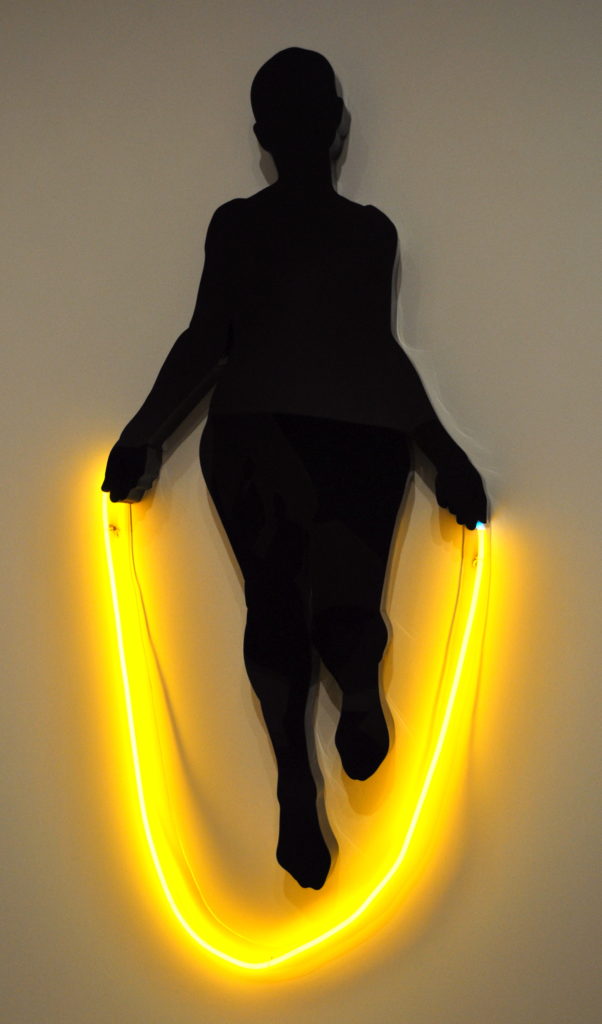People
American Pop Artist Idelle Weber, Known for Her Striking Depictions of Corporate Banality, Has Died at Age 88
The opening credits of 'Mad Men' recall the artist's featureless silhouettes of anonymous corporate workers.

The opening credits of 'Mad Men' recall the artist's featureless silhouettes of anonymous corporate workers.

Sarah Cascone

Pop artist Idelle Weber, best known for her striking compositions of black silhouettes set again flat, brightly colored backgrounds, died on March 23 at the age of 88. Her gallery, Hollis Taggart, announced the news.
Weber began producing her signature silhouette works in the 1960s. Her faceless figures ranged from domestic women to corporate office workers in suits and ties. The publication Artinfo dubbed her 1964 painting Munchkins I, II, & III the “original Mad Men painting” for its resemblance to the opening credits of the TV series.
Weber was born in Chicago in 1932 and grew up in Beverly Hills, studying art at Scripps College and UCLA. In 1957, the artist moved to New York and enrolled in the Arts Student League.
She soon began forging a place in the city’s male-dominated art world. She found early success when one of her works was included in the Museum of Modern Art exhibition “Recent Drawings USA.” But there were significant obstacles: art historian HW Janson told Weber that he respected her, but didn’t include women in his textbooks, and Robert Motherwell refused to let her audit his course at Hunter College because she had a child and was sure to give up painting.

Idelle Weber at her Brooklyn Heights studio, 1958. Photo courtesy of Hollis Taggart and the estate of Idelle Weber.
It took some years to secure gallery representation, but Weber eventually landed with Bertha Schaefer in 1962. Weber also went on to have solo shows at Hundred Acres gallery and OK Harris and, by the mid-1960s, was included in group shows at the Contemporary Arts Museum Houston, the Guggenheim Museum in New York, and the Milwaukee Art Museum.
Unusual for a Pop artist, Weber embraced the political turbulence of the era in her work, addressing events such as the Vietnam war and the Kennedy assassination, as well as broader themes such as consumerism.
In the 1970s, Weber moved away from Pop art and became a leading member of the Photorealist movement, painting close-up shots of trash and litter that simultaneously captured the beauty and decay of urban life.

Idelle Weber, East End Bufferin (1990). Courtesy of Hollis Taggart and the estate of Idelle Weber.
Like many women artists of her era, Weber has received renewed attention in recent years. The Los Angeles County Museum of Art acquired Jump Rope (1967–68), one of her plexiglass wall sculptures, in 2016. And when MoMA unveiled its expansion last fall, Weber was one of the artists it reintroduced as part of its effort to expand the canon beyond the white men who have traditionally dominated it.

Idelle Weber, Untitled (circa 1968–70), which went on view during the unveiling of MoMA’s expansion. Photo by Ben Davis.
Weber’s work can also be found in the collections of the Art Institute of Chicago, the Brooklyn Museum, the Harvard Art Museums, the Metropolitan Museum of Art, and the Yale University Art Gallery.
In 2018, Weber joined Hollis Taggart gallery, where she has since had two solo shows.
“We look forward to organizing many exhibitions of her significant body of work and to bringing to further light the incredible depth and intricacy of her artistic output,” the gallery said in a statement.

Idelle Weber, Jump Rope (1967–68). Photo courtesy of the Los Angeles County Museum of Art.